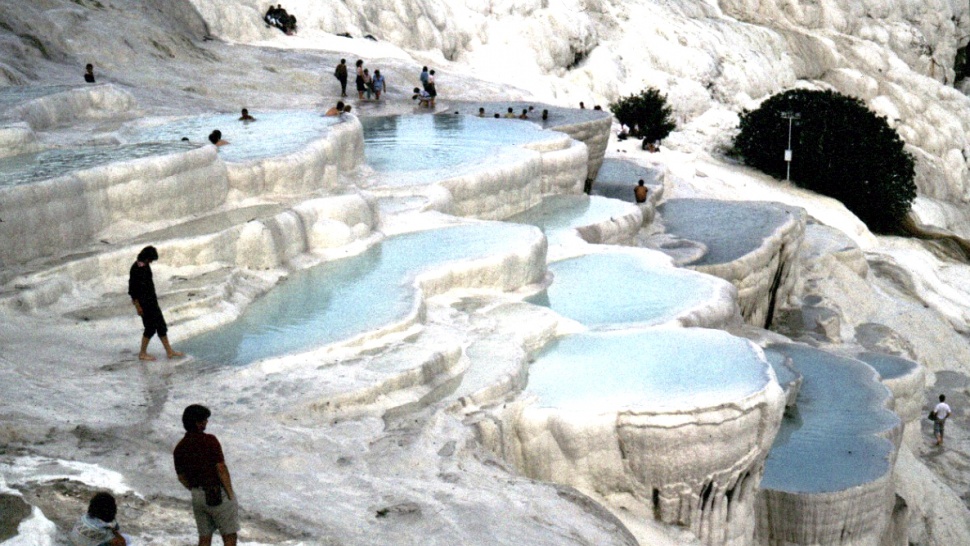Pamukkale is one of Turkey’s top attractions and a precious in the world with its cotton-look terraces. The underground water once gave life to the ancient city of Hierapolis now helps Pamukkale be one of the most important thermal centers of Turkey.
The Turks named the site Pamukkale which means "cotton castle" for its unusual sparkling white castle-like cascades. The warm and mineralized spring water flowing from calcareous white steps create an unmatched landscape. The famous thermal pools of Pamukkale and its rich history attracts tourists from around the globe.

Pamukkale is located in the Turkish city of Denizli. Denizli means "located by the sea", although the city is no where near the coast, it is believed that the name was given due to large underground water resources of the area. Denizli has always been a cradle of civilizations. Its fertile lands have been home to a number of civilizations, Persians, Greeks, Romans and Muslims being the notable.
The formation of this amazing landscape can be attributed to the strong earthquakes that have shook the country for centuries. These earthquakes formed cracks allowing water, rich in calcium carbonate, to come to the surface. As the water evaporated, layers upon layers of calcium carbonate deposited forming the unusual travertine of Pamukkale as we see it today.

The hotels built in the 1960s were demolished as they were draining the thermal waters into their swimming pools and caused damage to the terraces. Nowadays, water supply to the hotels are limited and they need to deposit the water used to the supply to generate.
Access to terraces are not allowed and visitors are asked to follow the main pathway. Due to the new regulations, only small pools are allowed to be used.




Share the News